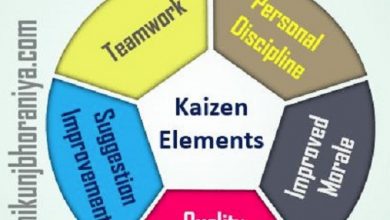What is Performance appraisal with 9 types objectives and importance
What is performance appraisal?
Performance evaluation is a tool used by HR, more specifically by the people management area, to measure the performance of employees or areas of a company . It can be carried out periodically according to the organization’s needs. In this article we will provide you information about the Performance appraisal.
This methodology also helps to understand whether the employee is below, meets or exceeds the performance expected by the organization and, based on an analysis of hard skills and soft skills , that is, technical and behavioral skills, it is possible to draw up a strategic plan for according to the need of that employee or team, such as training, promotion, bonus, dismissal , etc.
In addition, the performance evaluation helps in a strategic vision for the company, as it highlights strengths and points for improvement, both with regard to each employee and with regard to the teams. That way, it’s easier to visualize ways to improve processes and generate more results.
What are the objectives of performance appraisal?
Among the most common goals are development , improvement and innovation . The three points of attention generate different types of demands for the professional when they are broken down into goals.
These goals help measure progress and help guide the employee. Discover some of them below:
1. Development goals
Correspond to professional or personal growth. Here, you identify the employee’s potential and seek to promote the key skills to make it happen.
2. Improvement goals
These are the cases of correcting performance. This occurs when the reports show a performance below the expected standards and requirements, and HR must monitor the evolution of the indicators.
3. Innovation goals
It consists of creating new functions to increase productivity delivery. It is a determining factor for the company’s success, because, as the world is changing rapidly, organizations are constantly called upon to innovate.
4. Smart Goals
Choosing development, improvement and innovation goals, or focusing on another aspect, it will be important to establish appropriate levels of demand . The smart methodology can help a lot, as it establishes that the goals should be:
- something clearly identifiable and particularized ( specific) ;
- measurable in quantitative or qualitative terms ( measurable );
- a level within the possibilities, strengths and resources of the recipients ( attainable );
- a really important factor for the company ( relevant );
- achievable within a period of time ( defined in time ).
By considering the five criteria, you will promote transparency in performance appraisals. After all, everyone will know what the expectations are, and they will be fair.
9 types of performance appraisal:
The tool is intended to assess the individual and collective performance of employees, behavior, respect for standards, alignment with business objectives, the value added by the professional, the achievement of goals, etc.
The aim is to reduce the distance between expected and existing performance. The reports are the starting point for changes , such as training, replacement of leaders and policies to strengthen the organizational culture .
There is, therefore, no single way to use or take advantage of measurements. It is important to use the different types of performance evaluation questionnaires and apply the ones that are most suitable at any given time. Below, you can learn more about the different ways to assess:
1. Matrix 9 Box
Commonly called the Nine Box, this performance and potential tool has been one of the most used by companies to develop successions and better plan changes in the workforce.
It is essential to promote better people management when your business needs to hire a new professional, replace someone who was promoted or identify and train new leaders. Thus, the 9 Box Matrix helps to assess the company’s talents, analyzing its performance during its trajectory and discovering its potential for the future.
How to use the 9 box methodology
The 9 box assessment can be used from a performance management system that allows its application. It can also be done using spreadsheets.
Regardless of the choice, you will need to create columns with criteria that consider the potential of the employee (high, medium and low), aligned with three other columns about their performance (below expected, expected and above expected).
Once this is done, the use of the Nine Box effectively begins. In this table, the person responsible for the performance evaluation inserts the names of each analyzed employee in one of the “squares” of the table, according to their potential for improvement and possible promotion and with its current performance in the role in which it operates.
When you finish filling in the when, you will then have a clear idea of who are the professionals most ready to take on new roles and those who are not achieving the expected results.
It is a way of seeing the team as a whole, creating the possibility of promoting an action plan to improve overall performance.
2. Performance self-assessment
This is a type that can be very beneficial if you already have a mature team engaged in improving results. In addition, it is an excellent way to make employees feel that they are an important part of the improvement processes intended by management to achieve the expected results.
In the self-assessment, the employee is encouraged to list their weaknesses and strengths . In a second step in the process, he discusses this self-analysis with his leader. Thus, together, employees and managers can look for solutions to eliminate possible bottlenecks and improve processes.
The use of this tool is a stimulus for professionals to reflect on their performance, promoting their self-knowledge and offering them the chance to show their degree of maturity and their ability to understand the feedbacks passed on by the management towards continuous improvement.
A point of attention for the Human Resources team is to verify the impartiality of the employee and their leader at the time of analysis. It is essential that the dialogue is transparent and that the results are not only the result of meeting the individual interests of the professionals who participate in the self-assessment.
3. Team evaluation
While individual assessments aim to develop each employee’s potential, team assessments are essential for you to gain insight into how joint efforts are capable of impacting the company’s results.
Based on it, management is able to see how the group is aligned and find out how it can promote more exchange of knowledge and experiences among employees, increasing the chances of achieving the expected goals. In team assessment, what you should focus on is basically communication and relationship .
4. 180º performance evaluation
The 180º performance evaluation is a traditional way, in which the employee’s individual performance is verified by his/her direct manager , who closely monitors his/her routine tasks. Among its benefits is the guarantee of standardization in the analysis criteria, which allows everyone to be evaluated on the same topics.
However, if the relationship between leader and subordinate is not very good, impartiality in results may be compromised. Friction and conflict can detract from the objectivity of the measurements, leading HR to make mistakes.
One way to minimize the problem is performance appraisal calibration . Based on it, all reports are submitted to a committee composed of the people manager, HR representatives and professionals from different hierarchical levels.
The idea is to analyze the criteria used by leaders to make the level of demand more uniform and avoid contamination of the reports by personal problems between the leader and the subordinate.
5. 360º performance evaluation
The performance evaluation 360 is widely used in large enterprises. Through it, all professionals, regardless of hierarchy, can be appraisers and evaluated. This tool allows the employee to be evaluated by himself, by his superiors and peers/collaborators .
Consequently, we arrive at a complex analysis that allows for a clear identification of many variables that influence the production of results. After all, the different perspectives complement each other for a more accurate report.
The success of the method depends on guaranteeing the anonymity of the evaluators and requires a high degree of maturity from those involved , ensuring everyone greater privacy and freedom to measure the performance of colleagues and leadership.
Thus, there is true and impartial feedback and suggestions for strategies to create opportunities for changes in attitudes that result in the improvement of the behavior of the team and superiors.
6. Competency Assessment
In this case, the competence is divided into two parts:
- behavioral: closely linked to the behavior of the employee (proactivity, commitment, teamwork, interpersonal relationships, among others);
- technical: mode that varies according to the position and function, but the analysis must always be based on the company’s core activity (specific knowledge in software, machine, equipment, etc.).
If what you need is to find out what are the necessary competencies for a specific function or for a sector of the company, then this is the tool that should be used. From there, the manager will be able to focus the analysis on what really matters to him.
For this, it must determine which parameters will be used for the diagnosis and establish goals for employees. Thus, you can assess your skills techniques and behavioral (ability to teamwork, proactivity, etc. engagement and specific knowledge to perform its function, specifically).
7. Evaluation by objectives
Created in the United States in the 1950s, analysis by objectives is one of the most effective in promoting a sense of belonging in the team. This is because, in addition to carrying out the performance study itself, employees are responsible for establishing the measures that are necessary for the results to be achieved.
This means that professionals must outline goals to be achieved and a timetable for this to occur. Therefore, they are the ones who do:
- reviews of achievement of goals;
- the analysis of how they are acting to achieve the expected results;
- the directions they must take to increase their potential within the company.
8. Graphic scale
Graphic scale is probably one of the simplest ways to promote performance evaluation in a company. For this reason, it can be considered one of the most traditional tools.
It is a table in which, in a column, the skills to be evaluated will be lined up, such as creativity, punctuality, teamwork, attendance, among others. In the other columns, values for each skill will be inserted. They can be divided, for example, between excellent, good, fair, bad and terrible.
If you prefer, you can use a numerical scale, with grades from zero to five or from zero to ten. This simplicity is its greatest advantage, but it can also be considered its weakness: after all, there is a limitation in this type of assessment, as it does not allow for a deepening of the issues that must be improved in the performance of each one.
In any case, it can be used as a starting point for other types of performance analysis . The graphic scale can be, for example, a good ally in the 360-degree assessment, enabling the crossing of information obtained with the use of the two tools.
9. Leader evaluation
Finally, and not least, it is essential that the company also promote the analysis of its leadership. For managers, feedback from the team can be the way to understand if their performance is effective in guiding employees towards the expected results for the success of the business.
In this case, the team will answer questions about the performance of their leaders. They will also be analyzed by their superiors, being able to obtain a more complete view about their work and which points should be improved.
How important is performance evaluation?
Appreciating the performance of employees is not just a formality. For some time now, the number of processes that demand information about the people in the organization to be properly planned has been growing.
The most obvious is human training and development . Qualifying requires knowledge of current performance levels and monitoring the evolution of these levels as programs are implemented.
Another reflection of performance evaluations is seen in the distribution of rewards , because whoever has the best performance accesses the best benefits, such as bonuses, awards and opportunities.
The advice is also aided. By identifying an employee’s potential or weakness, HR can provide guidance on the best way to evolve and increase added value for the company.
There is also the importance of enq performance uanto p critical ressuposto business strategies. It sounds complicated, but it isn’t. Without performance, the company’s plans do not prosper. The best sales planning doesn’t hold up against bad salespeople , for example.
Finally, it is worth mentioning the processes initiated because of the performance reports. It is in performance that the effects of wear and tear on the organizational climate, of leaders who need to be replaced, errors in the mapping of HR processes and investments in people are investigated .




